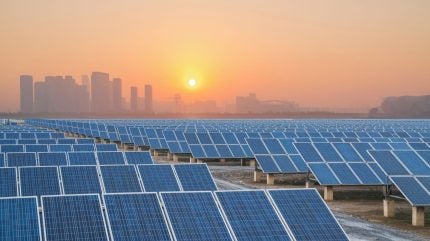
China’s new solar power capacity is set to experience a slowdown in the latter half of 2025 due to reforms eliminating guaranteed pricing, which is creating uncertainty for new projects, as reported by Reuters.
Total annual additions will still likely achieve a record high, due to frontloading.

Discover B2B Marketing That Performs
Combine business intelligence and editorial excellence to reach engaged professionals across 36 leading media platforms.
The world’s largest solar fleet has been expanding rapidly, but the growth rate is set to decline sharply. This trend poses challenges for global solar manufacturers who are already grappling with severe overcapacity and intense price competition.
With facilities primarily based in China, these manufacturers can produce more than double the panels needed by the global market in 2025.
As of June 2025, China has introduced 212 gigawatts (GW) of new solar capacity, a figure that more than doubles the first-half additions seen in 2024, as reported by the National Energy Administration (NEA).
However, analyst predictions suggest that second-half increases may be approximately half that recorded last year.

US Tariffs are shifting - will you react or anticipate?
Don’t let policy changes catch you off guard. Stay proactive with real-time data and expert analysis.
By GlobalDataNatixis analysts forecast 300GW of new solar installations for 2025 under their mid-point scenario. This would imply that only 88GW will be added after June when subtracting NEA data from the first half of the year.
Similarly, Fitch Solutions’ BMI predicts a total annual increase reaching up to 310GW — translating into an additional 98GW expected before December.
In contrast, the latter six months of 2024 alone saw 175GW worth of fresh installations contributing to a record surge totalling 277GW during that year.
Power sector reforms initiated in early 2025 have eliminated fixed rates for renewable energy projects, and projects established post-June must therefore navigate selling electricity at fluctuating market prices.
This shift introduces uncertainty regarding the rate of return for investors who are used to fixed pricing. To complicate matters further, the specific market mechanisms can vary from one province to another.
As a result, companies rushed their projects forward within the first half-year period, which led them to add an extraordinary 93GW in May, dropping off significantly to 14GW in June.
BMI senior power and renewables analyst Linda Zeng was quoted by the news agency: “All of the projects were rushing to be commissioned ahead of the last window where they have basically guaranteed revenue.”
She anticipates that annual additions will remain elevated due to the significant growth observed in the first half of the year.
However, she expects that the monthly additions for the remainder of the year may align with the rate seen in June, which is not particularly high.
According to Zeng, solar installations are projected to stabilise at approximately 250GW per year from 2026.
During the first half of 2025, the curtailment rate for solar power climbed to 6.6%, a significant increase from 3.9% in the same period of 2024.



